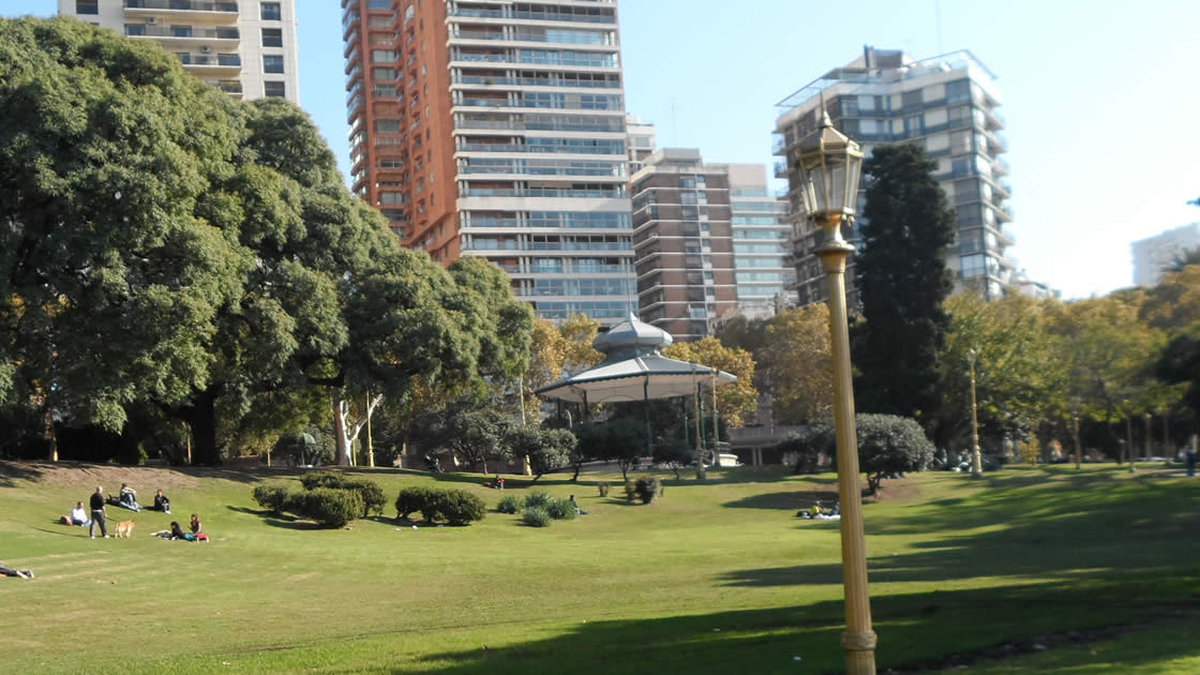Where is the cistern, where are your patios, where are your bars?said the poet Francisco García Giménez and sang Don Roberto Goyeneche. That tango tells the story of a mansion in Belgrano neighborhood where children played on the sidewalk, were accompanied by the sound of a piano and listened to the train.
They were far from imagining what happened in 1957. A municipal ordinance, that is, a change in the Planning Code, allowed building in height, that is, to make towers and thus not only the old mansions left but also the sun.
The gardens and the river, which in the early 1900s played an important role in this neighborhood, were no longer visible and the buildings competed in height to see the sunrise. It happened sooner rather than later that the views stopped being open and became closed and they ended up seeing the neighbor across the street in his underwear.
It was a time of great growth in construction, many buildings were built and of course many mansions were torn down. Perhaps those who allowed the Code change did not think about what the City would look like fifty years later.
Surely they did not study the urban planning of many European cities, which throughout the centuries and the different governments maintained long-term planning that allowed the original architecture to be preserved.
In World War II, many European cities have been bombed and destroyed by 70%, yet efforts were made to restore the old and preserve the styles.
On the other hand, we lost the sun and true works of art. Those houses from the last century had a trade. The architect was also a builder and his work group included European immigrants who were true artists.
If you stop to see a construction from the beginning of the century, you will be able to see details that make for good taste, cedar wood doors with beveled glass, 1/2 point arches with marble details, work on the front of the house with bricks placed in different ways that generate moldings on the balconies, details on the downspouts of the storm drains.
When you enter one of these houses today, you are surprised by the smell of the wood, the pine trees still give us their aroma after so long, the floors were unique pieces, complex drawings resolved with Slavonian oak and ebony.
The ceiling with complex plaster work since the plasterers were the highlight of the construction team; They dressed in white and wore a hat similar to that of the waiters in a bar. His task required a very delicate technique because the plaster dries quickly and wooden moldings were used.
With different spatulas they achieved the required shapes, they were works at height, they were frescoes worthy of Miguel Angel. But the concrete arrived and the great height arrived.
belgrano.png
I am not against progress but I am against the lack of planning. Why am I talking about something that happened so long ago? Because today, despite a law that prevents the demolition of homes prior to 1941, beautiful houses from that era continue to be torn down.
Today many neighborhoods in our City are in danger of losing the sun. Large real estate businesses develop high-rise buildings in areas where they should not be built.
And why is it done? If I stop seeing the micro and see the macro, I feel that our society lacks moral nobility, something that is neither inherited nor bought. It is built… It implies being committed to the whole, working thinking about the future, about the country that our children and our children’s children will inhabit.
Today there is a new Planning Code that thinks of a flatter City, more on a neighborhood scale. We have a lot of heritage to take care of. If we learn to love what is ours more, maybe in 50 years there will be a change. It may seem like a utopia, but good intentions and noble actions move mountains.
Architect and real estate broker.
Source: Ambito
David William is a talented author who has made a name for himself in the world of writing. He is a professional author who writes on a wide range of topics, from general interest to opinion news. David is currently working as a writer at 24 hours worlds where he brings his unique perspective and in-depth research to his articles, making them both informative and engaging.




